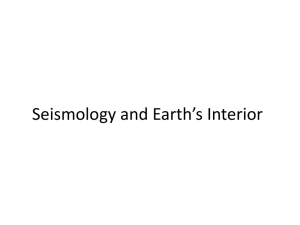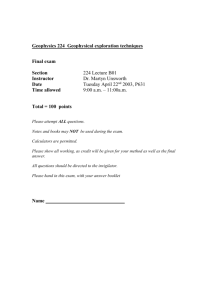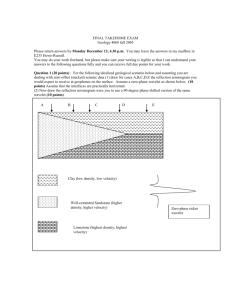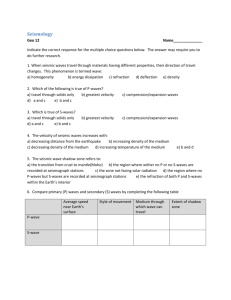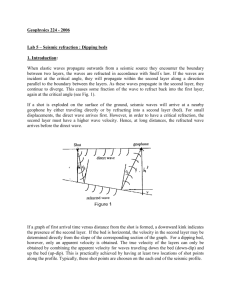Geophysics 224
advertisement
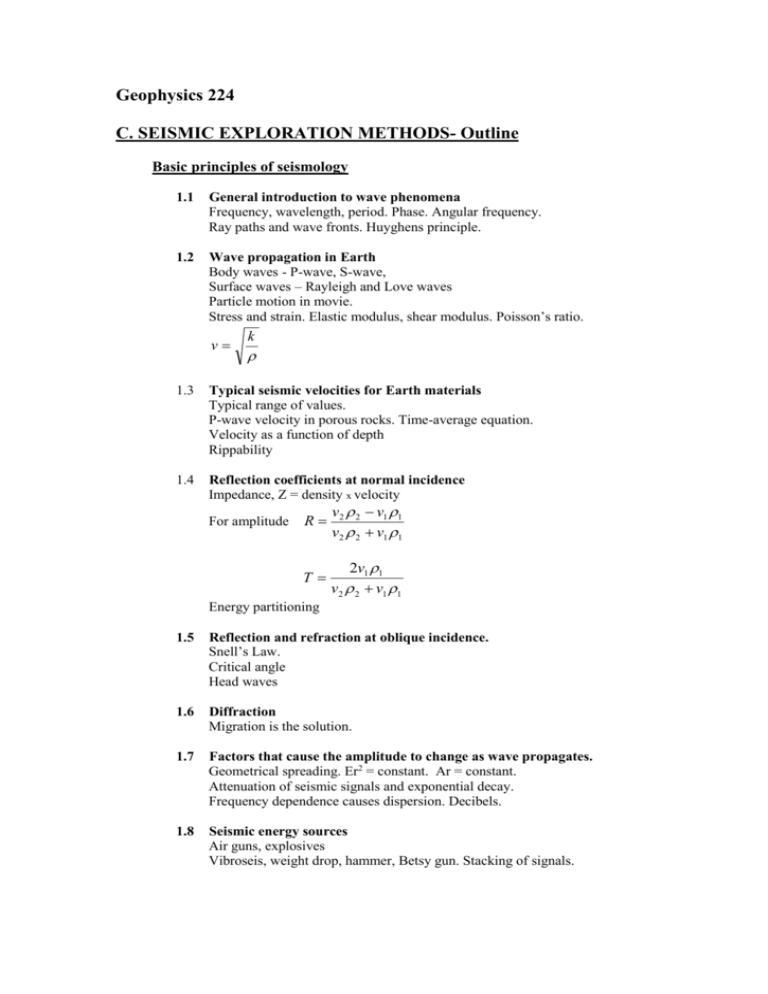
Geophysics 224 C. SEISMIC EXPLORATION METHODS- Outline Basic principles of seismology 1.1 General introduction to wave phenomena Frequency, wavelength, period. Phase. Angular frequency. Ray paths and wave fronts. Huyghens principle. 1.2 Wave propagation in Earth Body waves - P-wave, S-wave, Surface waves – Rayleigh and Love waves Particle motion in movie. Stress and strain. Elastic modulus, shear modulus. Poisson’s ratio. v k 1.3 Typical seismic velocities for Earth materials Typical range of values. P-wave velocity in porous rocks. Time-average equation. Velocity as a function of depth Rippability 1.4 Reflection coefficients at normal incidence Impedance, Z = density x velocity For amplitude R v2 2 v1 1 v2 2 v1 1 T 2v1 1 v2 2 v1 1 Energy partitioning 1.5 Reflection and refraction at oblique incidence. Snell’s Law. Critical angle Head waves 1.6 Diffraction Migration is the solution. 1.7 Factors that cause the amplitude to change as wave propagates. Geometrical spreading. Er2 = constant. Ar = constant. Attenuation of seismic signals and exponential decay. Frequency dependence causes dispersion. Decibels. 1.8 Seismic energy sources Air guns, explosives Vibroseis, weight drop, hammer, Betsy gun. Stacking of signals. 1.9 Seismic detectors. Geophones and hydrophones 2. Seismic reflection 2.1 Travel time curve for single horizontal interface. Normal moveout (NMO) to separate depth and velocity. 2.2 Travel time curves for multiple horizontal layers. Dix equation. Multiples. 2.3 Travel time curves for a dipping reflector. 2.4 Displaying real seismic data. Traces and seismic sections. Reduction velocity. 2.5 Common depth-point profiling. Stacking to improve signal-to-noise ratio. 2.6 Resolution. Vertical limitation from wavelength. Horizontal limitation from size of Fresnel zones. 2.7 Static corrections and sources of noise. Filtering strategies to reduce noise. Convolution and deconvolution. 2.8 Migration to recover true reflector geometry and depths. 2.9 Applications-I. Hydrocarbon exploration. Structural analysis. 3-d acquisition. Time slices. Seismic stratigraphy. 2.10 Applications-II. Lithospheric studies. BIRPS, Lithoprobe and INDEPTH data. 2.11 Vertical seismic profiling. 3. Seismic refraction 3.1 Travel time curves for a two layer Earth. 3.2 Travel time curves for a three layer Earth. Hidden layers (thin or low velocity) 3.3 Travel time curve for a dipping layer. Reversed refraction profile. 3.4 Applications in shallow geotechnical studies 3.5 Applications in lithospheric studies. Discovery of the Moho. MJU 2003


